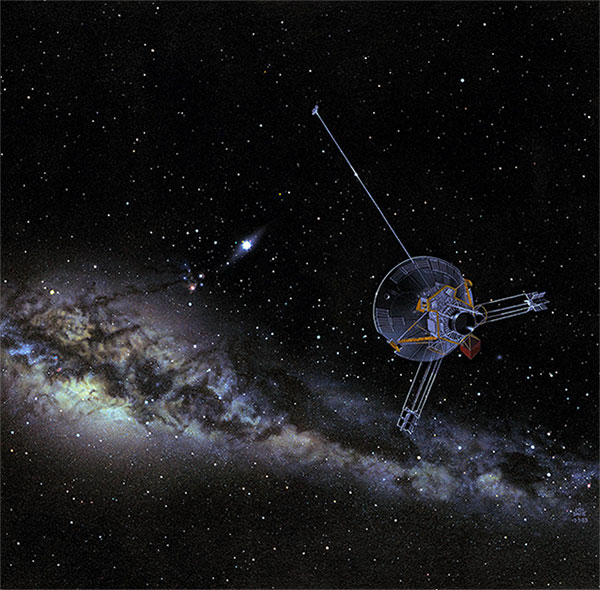Historical landmarks for NASA's 60 years of space exploration
NASA achieved many brilliant achievements such as launching space spacecraft, bringing people to the Moon, bringing explorers to Mars.
The US space agency (NASA) was established on July 29, 1958. Since then, NASA has always been a leading organization in the field of space research and exploration.
NASA launched the first spacecraft called Pioneer 1 in October 1958.
 Pioneer 1 spacecraft.
Pioneer 1 spacecraft.
In 1959, two 'monkey astronauts' Able and Baker were taken to space and returned to Earth safely.
Two years later, Alan Shepard became the first American to fly to space successfully.
John Glenn was the first American to fly around the Earth in 1962, even completing three rounds.
In 1966, Surveyor 1 became the first American ship to land on the Moon.
In 1969, and made history when walking on the Moon.
NASA launched many probes for the purpose of exploring the Solar System.
Pioneer 11 left Earth in 1974 and sent the first images of Jupiter.
Viking 1 was the first spacecraft to safely land down Mars in 1975.
Voyager 1 and Voyager 2 spacecraft discovered 4 giant planets near the outer edge of the Solar System and their 48 moons.
becoming an important space exploration tool since its operation in 1990. Hubble explores everything from the planet in the Solar System to the development of distant galaxies.
In 1997, the Galileo spacecraft began its exploration of Jupiter and the surrounding moons. The ship was sent to the moon image of Europa, showing that this place could exist in the hidden ocean and life.
In 2003, two expedition wheels were launched to study the Martian terrain. In particular, Opportunity expedition vehicles are still active, although initially expected to be only 90 days.
- The terrible disaster of space exploration
- Beautiful set of photos about wild ruins throughout the planet
- Sell cakes and car washes to dream about space exploration
- Space explorer with $ 100,000
- Listed the great space exploration missions in history
- These 9 famous landmarks are about to disappear forever, all because ...
- China and Russia promoted to sign an agreement to explore the historical universe
- NASA revealed the 'Hedgehog' robot to explore the universe
- The picture changed the world 100 years ago
- NASA is embarrassed
- People can go honeymoon on the Moon in the next 10 years
- Space exploration with 19th-century motives
 Van Allen's belt and evidence that the Apollo 11 mission to the Moon was myth
Van Allen's belt and evidence that the Apollo 11 mission to the Moon was myth The levels of civilization in the universe (Kardashev scale)
The levels of civilization in the universe (Kardashev scale) Today Mars, the sun and the Earth are aligned
Today Mars, the sun and the Earth are aligned The Amazon owner announced a secret plan to build a space base for thousands of people
The Amazon owner announced a secret plan to build a space base for thousands of people How long does it take to reach another star system besides the Solar System?
How long does it take to reach another star system besides the Solar System?  How long is the flight to the Moon?
How long is the flight to the Moon?  Humans reach for the stars in 2024
Humans reach for the stars in 2024  NASA postpones manned moon mission due to unusual incident
NASA postpones manned moon mission due to unusual incident  NASA's Farthest Flying Spacecraft Is Dying
NASA's Farthest Flying Spacecraft Is Dying  China sends 'Moon bricks' into space
China sends 'Moon bricks' into space 